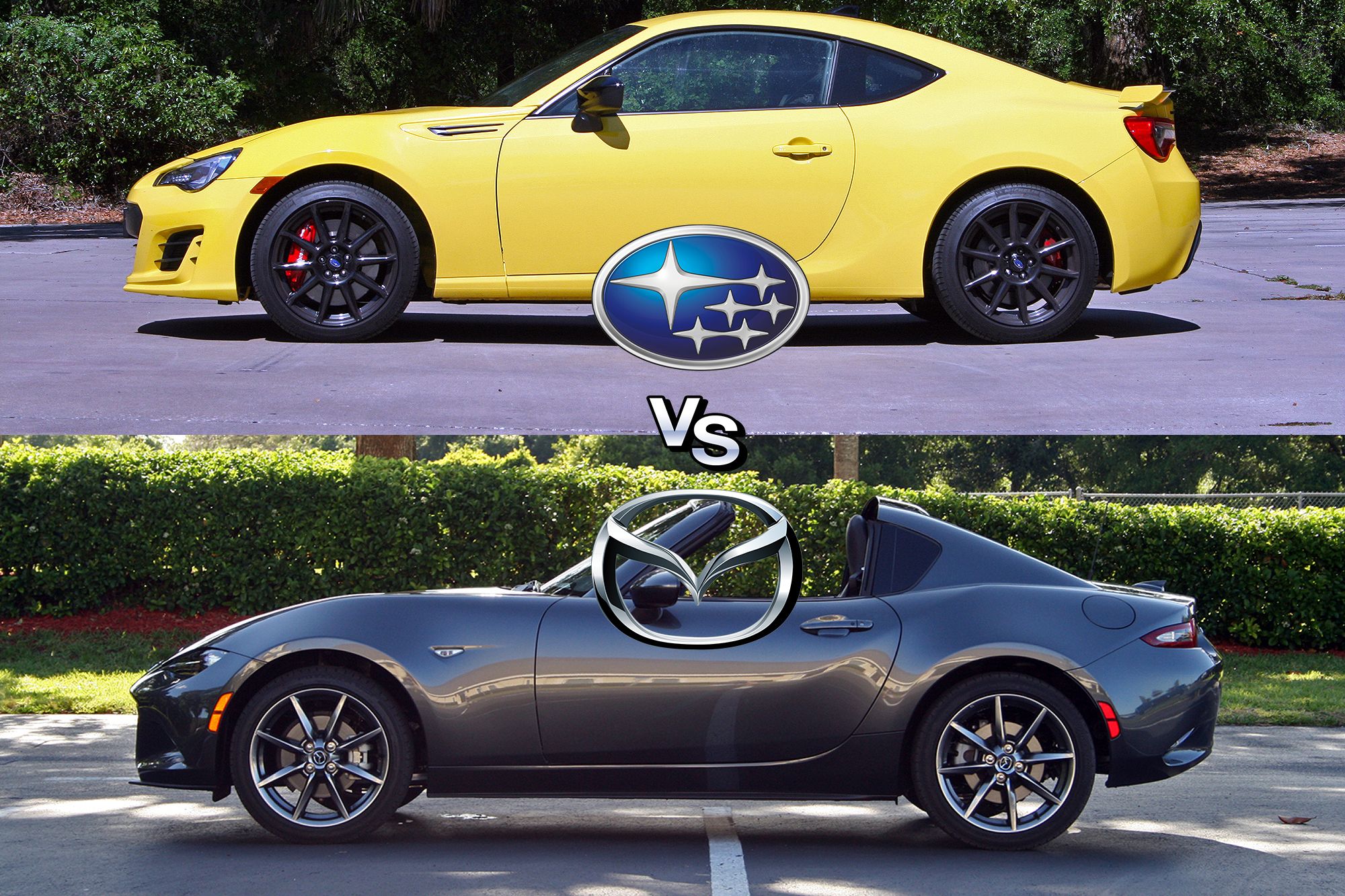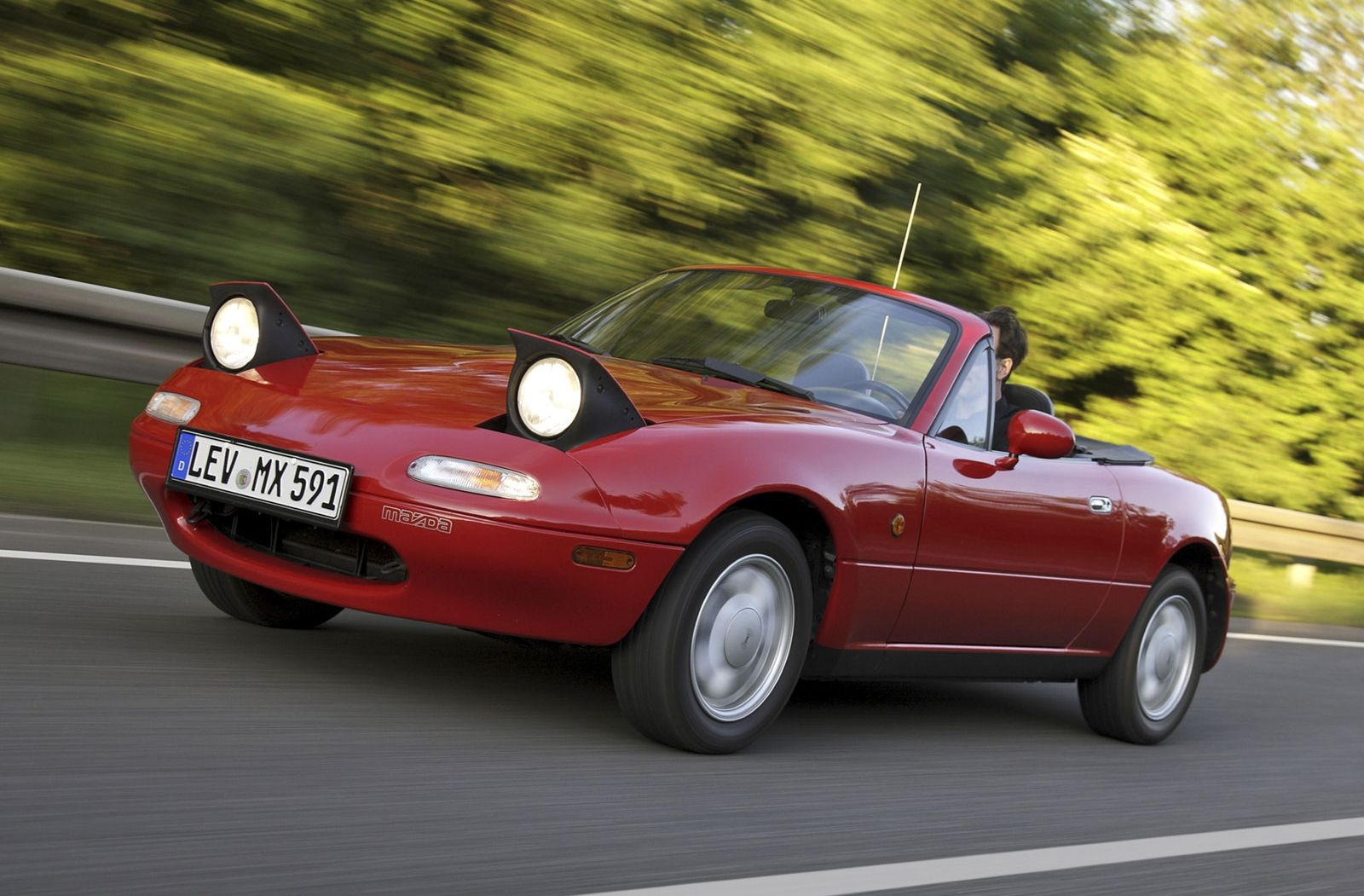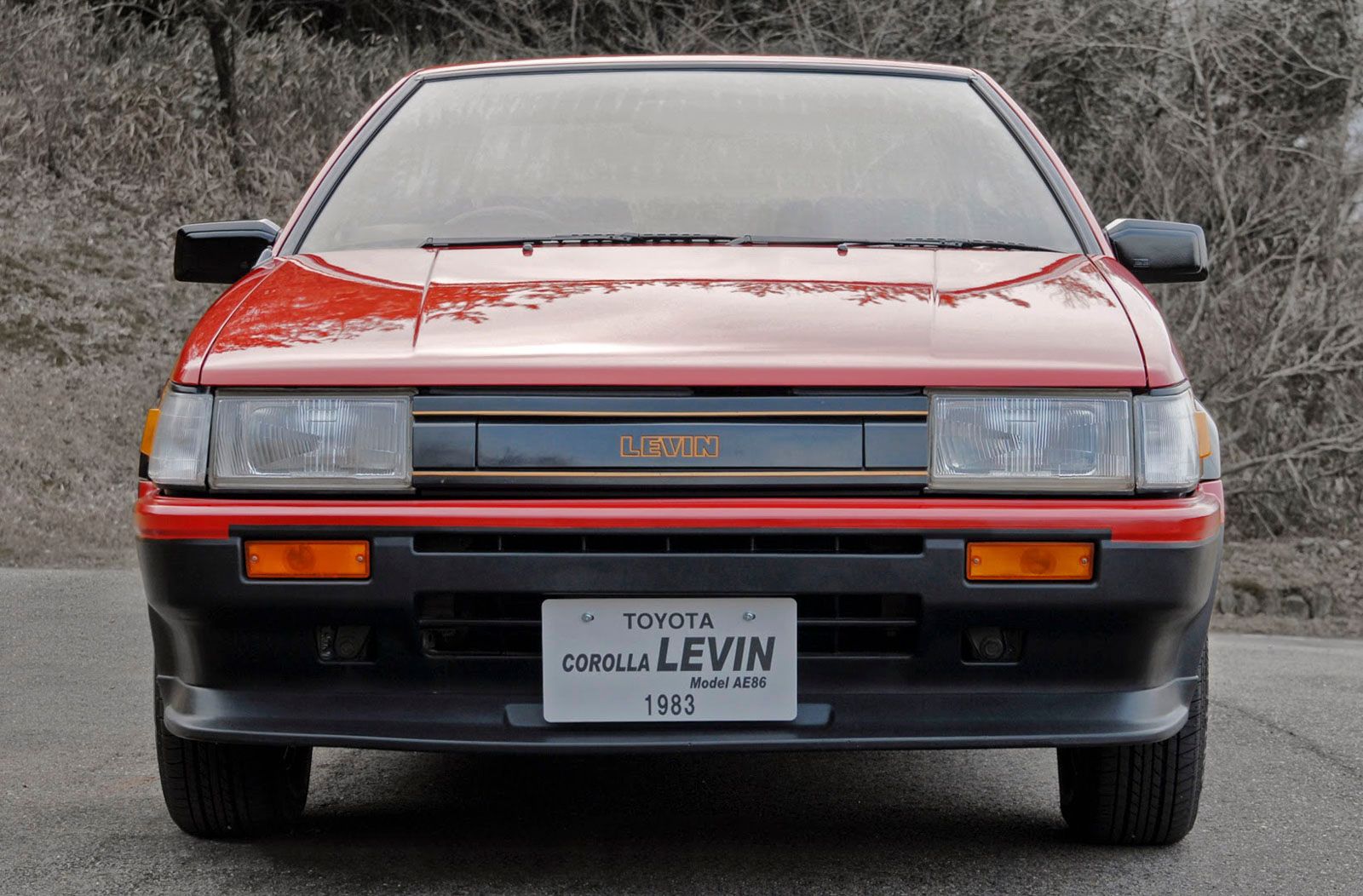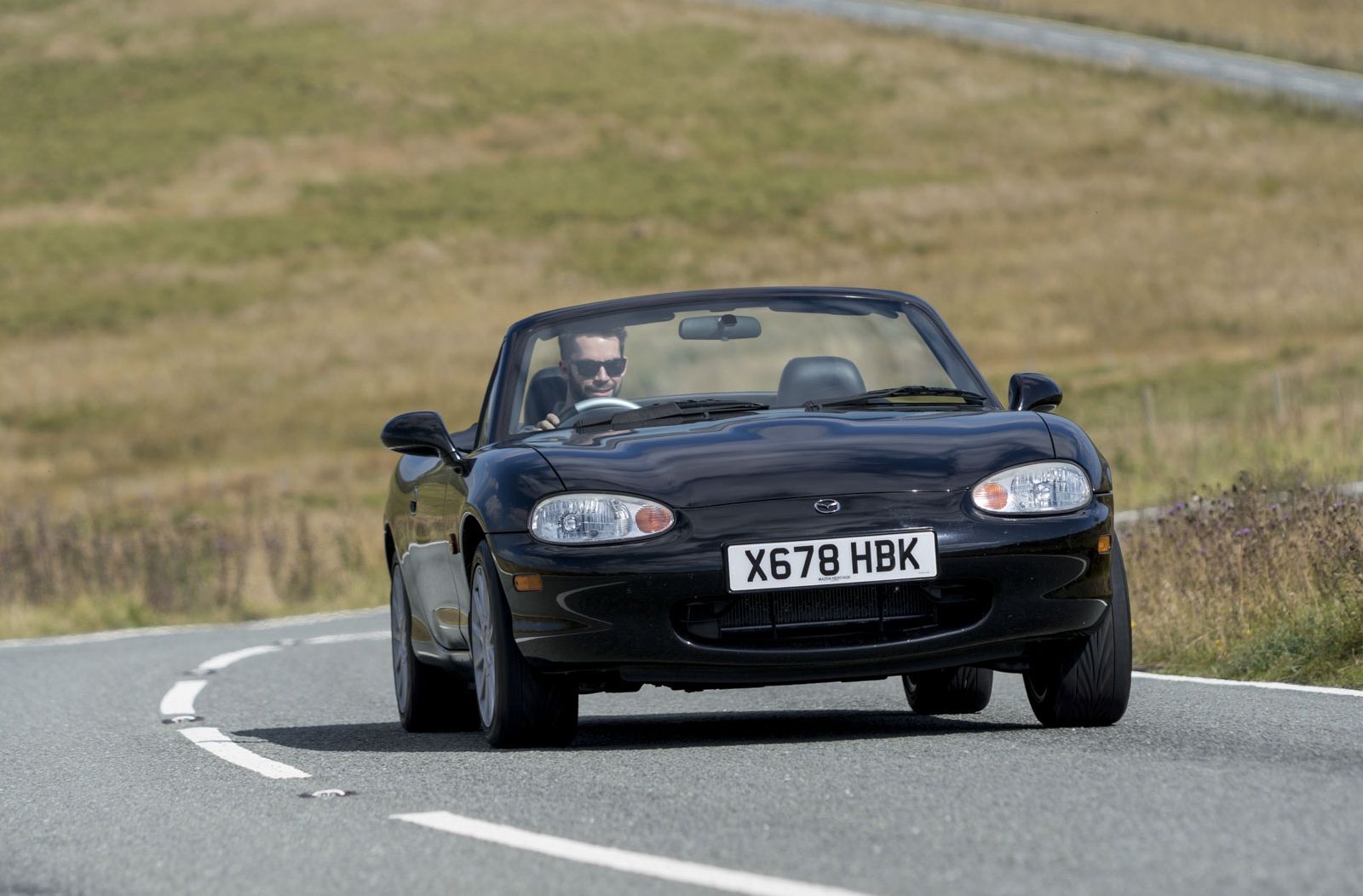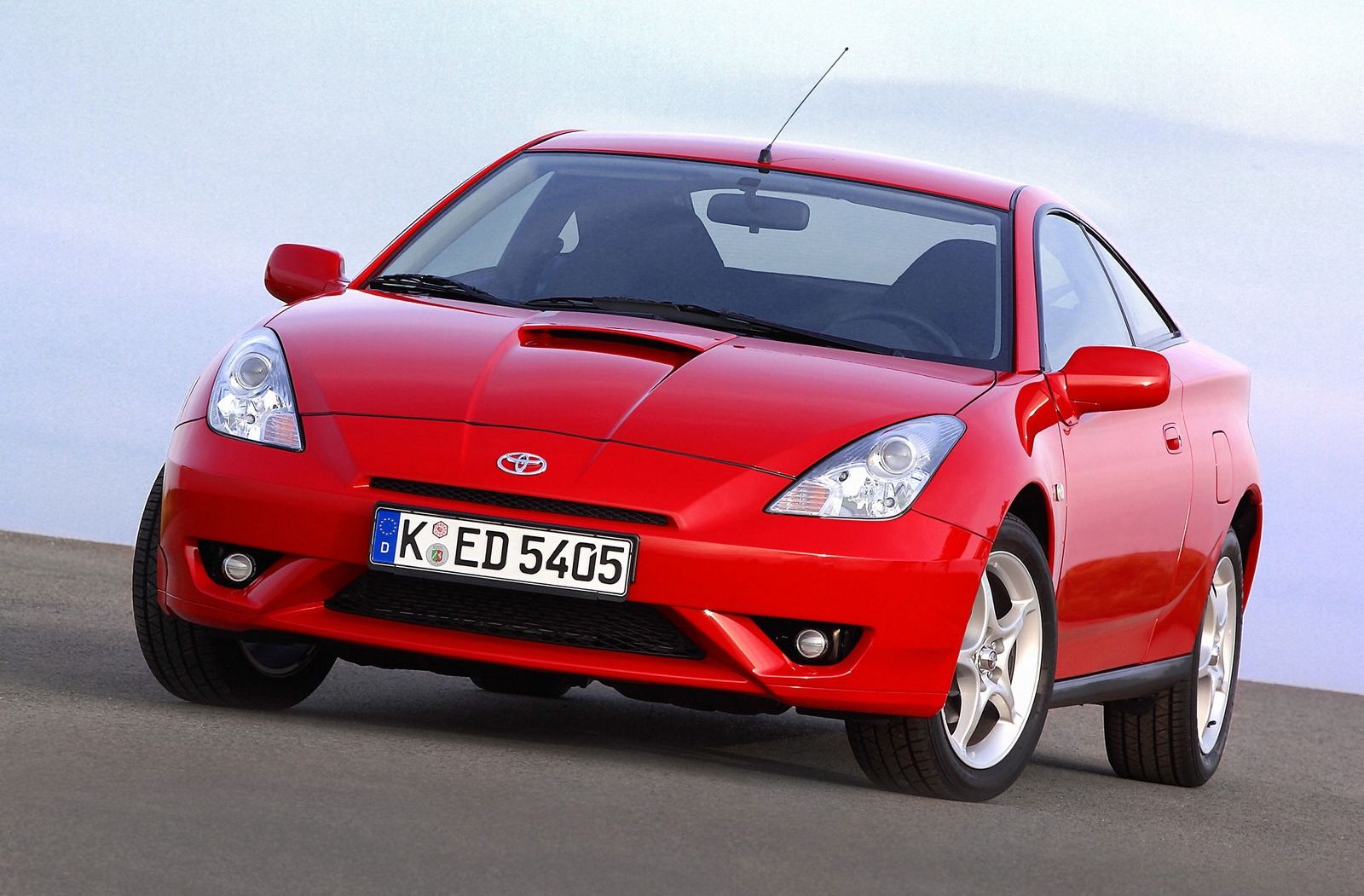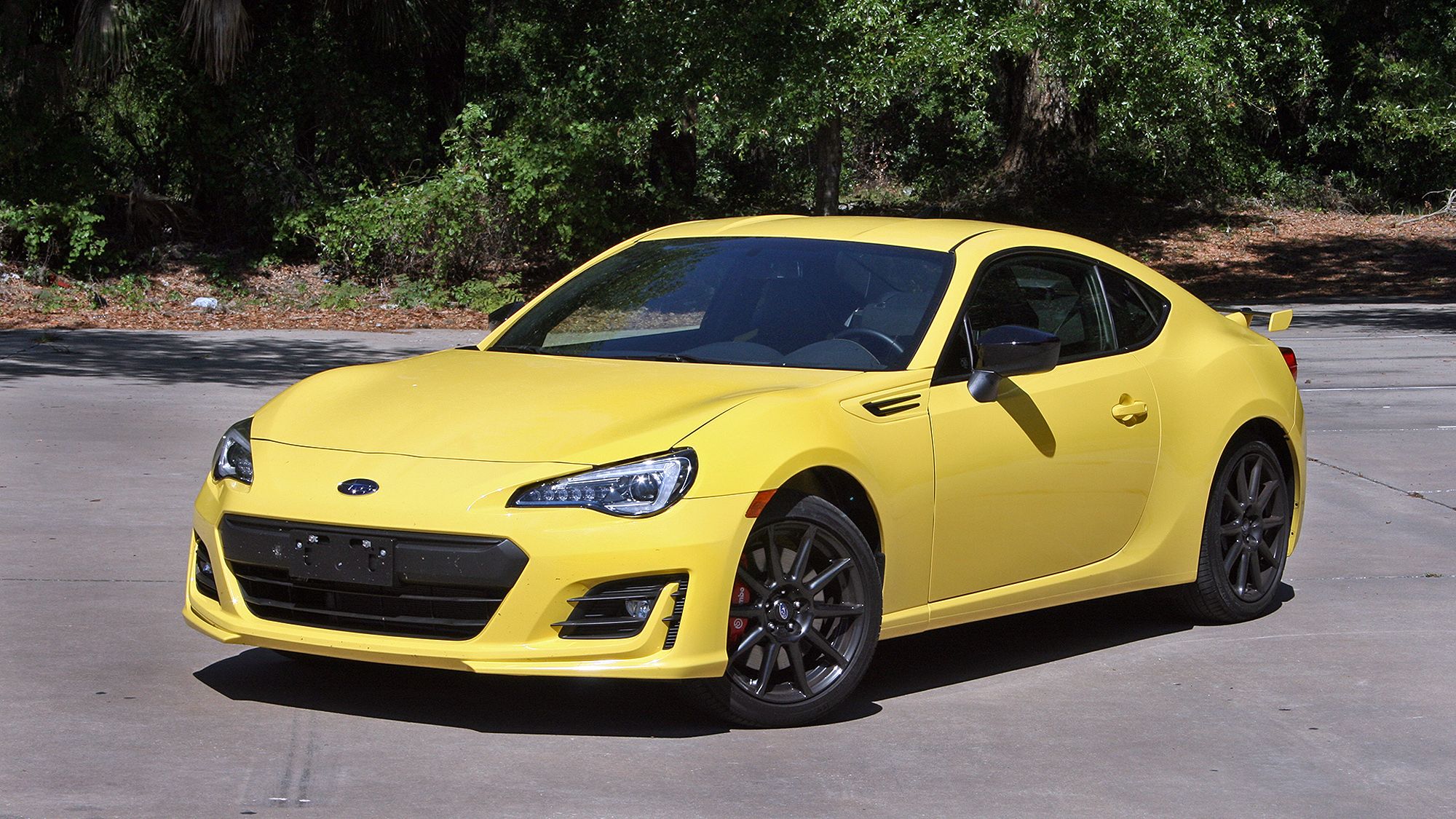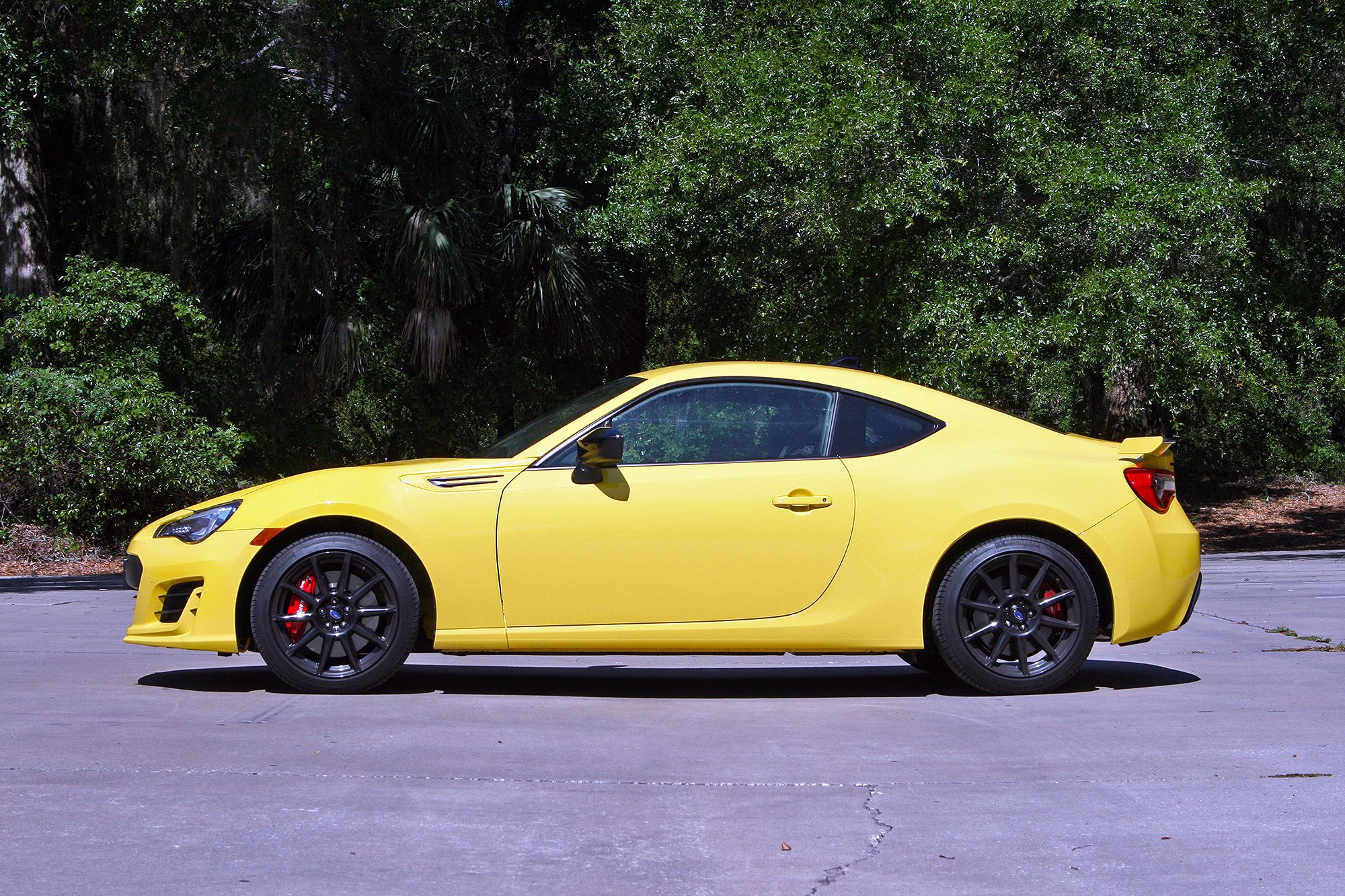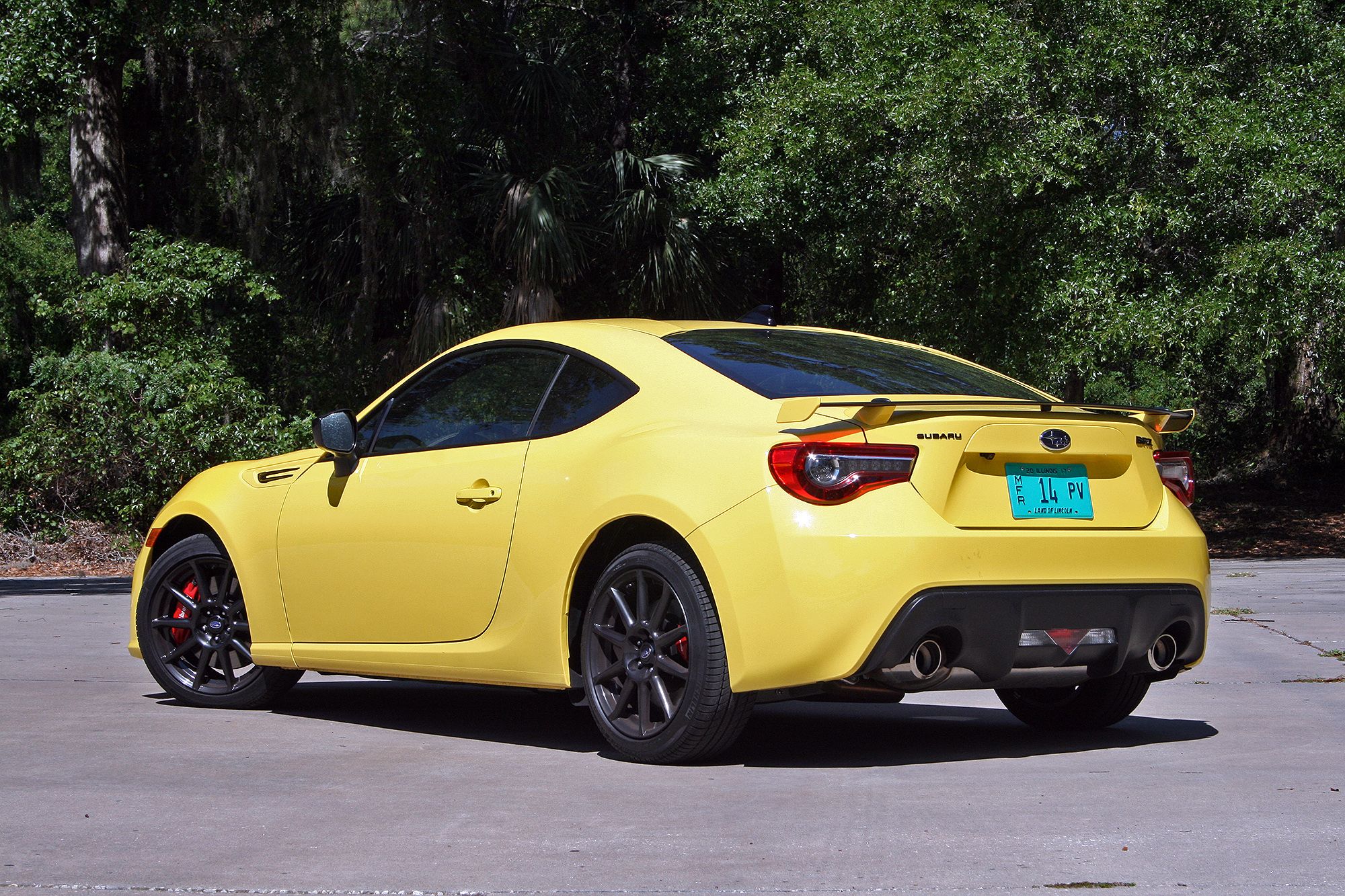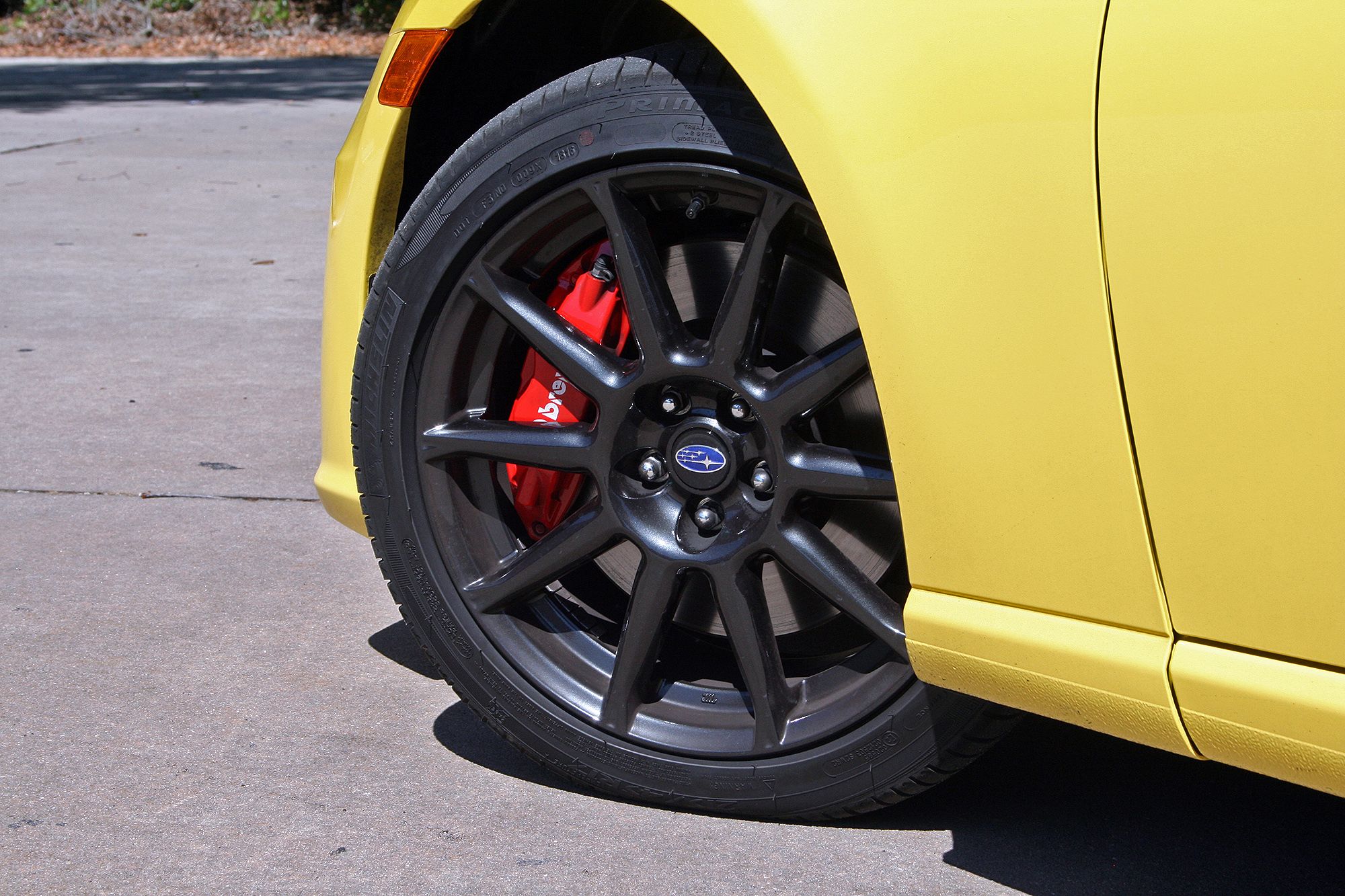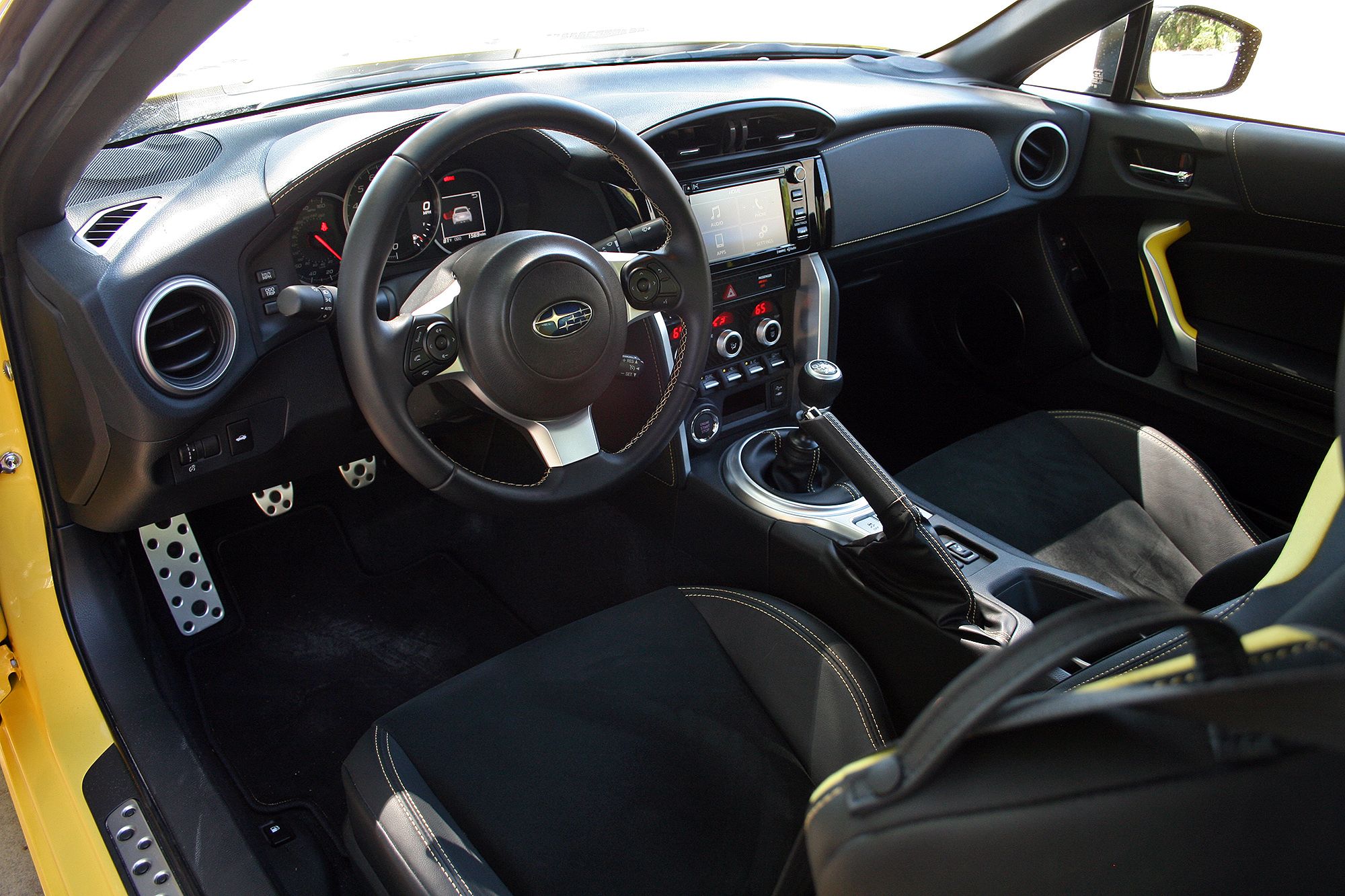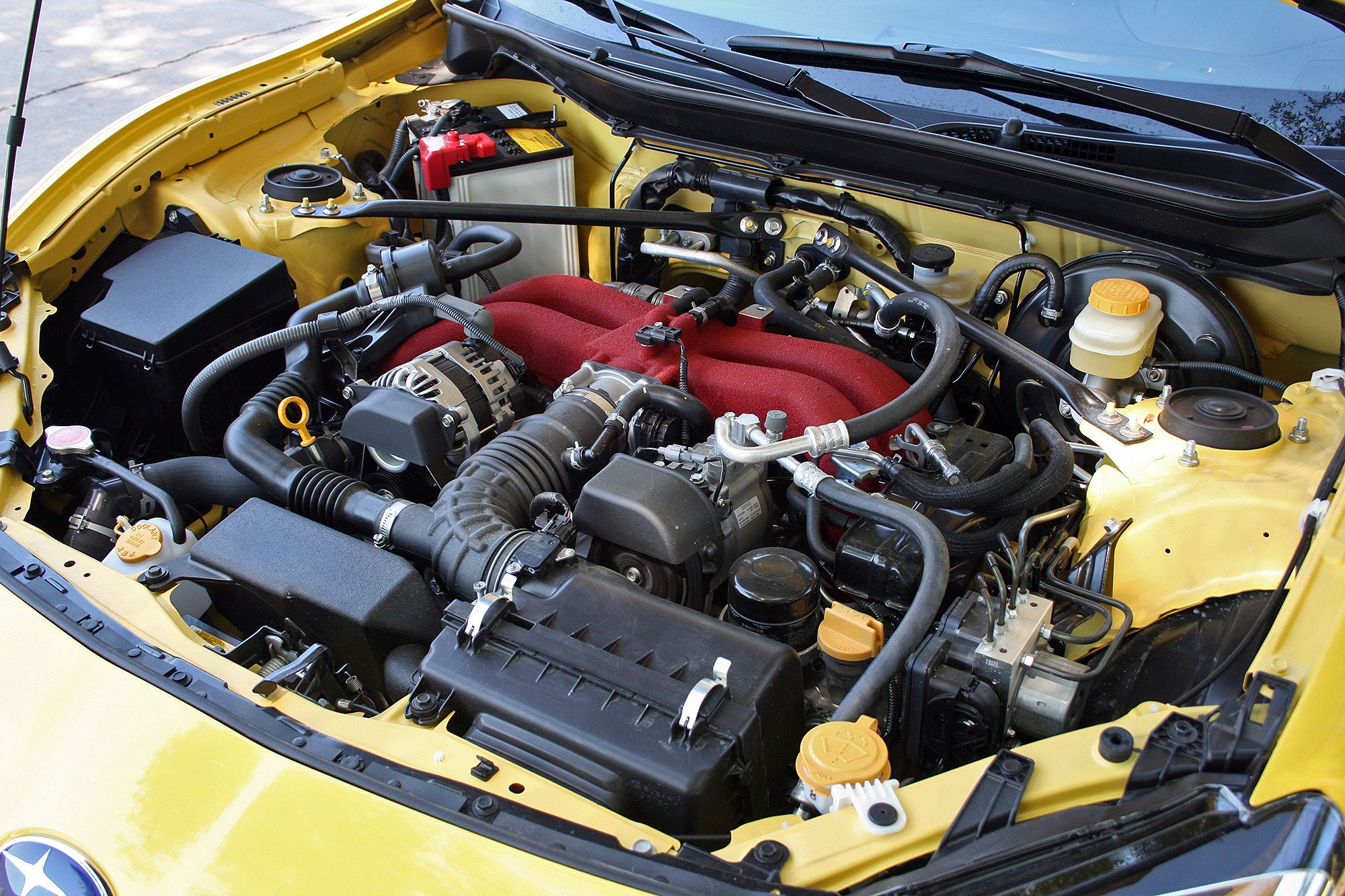The Subaru BRZ and Mazda Miata MX-5 RF are two interesting coupes that couldn’t be more different yet still belong to the same category. The seat count, roof style, and driving dynamics are the major differentiators, while cylinder count, drive wheels, and manual transmissions keep the two related. But which is better? To find out, I spend a week with each car, back-to-back, and flogged each at the Circuit of the Americas racetrack.
The chance to get production cars on the Circuit of the Americas racetrack doesn’t come around too often. The busy track holds events for Formula One, MotoGP, American Le Mans, and the Rolex Sport Car series, among others. However, I got the chance with the Texas Auto Writers Association and their Springtime Auto Roundup. Forty-plus vehicles from several automakers were on hand with an open track for testing. How’d the Mazda and Subaru stack up? Keep reading to find out.
Continue reading for the full run-down.
The Back Story
The Mazda MX-5 Miata RF Grand Touring and Subaru BRZ Performance Package come from different backgrounds. The Miata enjoys a storied and well-known history dating back to 1989 when Mazda launched the first-generation Miata as a spiritual successor to two-seat British roadsters from various automakers. The story goes, Motor Trend journalist Bob Hall challenged Mazda’s Kenichi Yamamoto and Gai Arai to build a “classically British sports car” in 1976. By 1981, Hall secured a product planning position with Mazda and began working on his dream. In 1989, the Miata debuted at the Chicago Auto Show. Four generations later and the Miata remains a sub-compact two-door roadster with nimble handling, a low curb weight, and reliability those British roadsters never had.
Also hailing from Japan, the Subaru BRZ is a more recent development that started life in the 2012 model year. Subaru partnered with Toyota in the development, giving design responsibilities to Toyota and most of the engineering duties to Subaru. Toyota designers pulled inspiration from the 1967 Toyota 2000GT roadster, while the car’s namesake is the 1980s AE86 generation of the Corolla. Both Toyota and Subaru sell their own version of the car, with Subaru using the BRZ name, while Toyota uses the 86 (pronounced eight-six). The 86 was originally sold in the U.S. under Toyota’s youth brand, Scion, and named the FR-S. When Scion got the axe in 2016, the FT-S became the Toyota 86 in the U.S. for the 2017 model year. Everywhere else in the world, the car had always been badged under Toyota as the 86. All versions are built by Subaru in Japan and exported across the world.
On the Road
Traits that make a sports car fun on the track make for interesting bedfellows on the street. Stiff suspensions translate every bump and direct steering can be darty at highway speeds. Those are the tradeoff drivers must make, right? Well, not necessarily. In the Miata, the suspension is dialed in rather well for absorbing rough pavement and expansion joints. It’s no Range Rover Autobiography, but it’s not a Corvette C3, either. The Mazda is surprisingly adapted to surface streets, actually. The car handles daily driving in stride, never complaining or making is occupants feel pummeled. The steering isn’t overly boosted, but feels completely natural for the car. On-center, the wheel gives feedback on what the front tires are hitting. Feedback to the driver increases in a turn, giving constant information on how well the skinny tires are gripping.
The Subaru BRZ, on the other hand, is bit brasher in its daily living. Like your collage roommate, the BRZ parties hard all the time. A trip to the grocery store feels like an open-class road race. Every little bump makes its way to the Alcantara-covered seats, while road noise reverberates throughout the cockpit. Engine noise is far more prevalent in the BRZ, too, lending to that “always on” impression. The BRZ’s clutch and throttle are far less forgiving, too. Miss the take-up point on the clutch or fail to nail the proper throttle position and the BRZ will lurch with driveline lash. The Miata’s six-speed just takes the mistake in stride. Conversely, the rev-happy Boxer engine and light clutch make anyone look like a downshift pro. Like the Miata, the steering is rather nice – communicating what the front wheels are up to throughout its range of motion. Mid-corner feel is excellent and conveys the struggle those puny Michelins have with maintaining grip. That’s true around town at below-legal speeds. Imagine how it feels on the track.
Blasting the Circuit of the Americas
As much fun as tooling around town can be in a retractable fastback or tightly sprung coupe, it’s the racetrack that brings the cars alive. The COTA track doesn’t disappoint, either. Its 3.4-miles of pavement has huge elevation changes and hairpin turns. Even at speeds well below 100 mph, the track provides plenty of challenge for stock production vehicles. Pointed out of pit lane, the 133-foot-tall hill of turn 1 consumes every inch of windshield ahead of the car. The hill climb allows for full-throttle acceleration for an extended period, followed by hard braking and a hairpin left turn at the crest of the hill. The next few turns are long sweepers ending with a near 90-degree left turn up a second hill. More sweeping, up-hill turns are followed by downhill straight where speeds can pick up. Yep another hairpin left turn leads to a long straight where the highest speeds are achieved. More hairpin turns finish off a lap at COTA, with our base camp set up along pit road.
Full throttle in the 2017 Mazda MX-5 Miata RF produces a healthy growl form its naturally aspirated 2.0-liter four-cylinder. Quick shifts are easily snapped off thanks to the Miata’s near-perfect six-speed gearbox. The revs stay high as a downshift to second is matched with hard braking to swing the fastback ‘round turn 1’s apex. It’s here the Miata’s supple on-road suspension shows its weakness. Body roll is rather prominent, but not off-putting. The car quickly settles down as the front tires find center. Zero play in the wheel gives plenty of information on what the tires are up to and whether they are sticking. Understeer rears its head when pushing the Miata really hard into a corner, but otherwise it’s absent. The long straights shine a light on the Miata’s humble 155 horsepower. Fifty more horsepower high in the rev range would do wonders for the car. Nevertheless, the Miata shoots around corners and uses all of its 148 pound-feet of torque to dig out of the hairpins with ease in second gear. Braking feels robust and fade free, specially for the number of times journalists took the Miata RF onto the track. It hardly spent any time in the pits between drivers yet showed no signs of slowing down.
The fun level didn’t diminish with the BRZ. In fact, the Subaru is a bit more on the thrilling side with its raucous engine noises, flat cornering nature, and gearbox that makes you work to nail shifts. Off the line, the BRZ feels peppy in first but requires a shift to second well before 60 mph. Revs climb quickly as I reached to top of COTA’s big hill and the apex of Turn 1. The hairpin shows just how flat the BRZ corners. Almost no body roll inspires confidence, matched by the steering’s short ratio that requires relatively little input to produce big movements in the front tires. With the traction control in Track Mode, the Subaru’s tail loves hanging out. It’s easily controllable, too, allowing just enough fun without danger of hitting walls guardrails.
The engine’s loudness seems overenthusiastic when comparing it with the tachometer. Even at 4,000 rpm of its nearly 8,000 rpm rev range, the Boxer four-cylinder sounds as if it’s maxing out. Intake and exhaust noises are both present and both easily distinguishable. Nevertheless, the little 2.0-liter keeps chugging with its 205 horsepower. The Boxer’s 156 pound-feet of torque comes on late in the rev range, too, at 6,400 rpm. And even though the Miata only makes 148 pound-feet, the MX-5’s torque peaks at 4,600 rpm, making it pull harder out of slow, second-gear corners. Still, the BRZ flies around the track with gusto, its skinny 215-series tires howling for grip the entire time.
Braking is very confident in the BRZ, with many thanks given to the Performance Package’s upgraded Brembo brakes. Four-piston calipers up front are matched with larger, single-piston calipers out back. Like the Miata, the BRZ never exhibited any signs of brake fade. Again, the weak point is the Michelin Primacy HP tires. They are simply outmatched by the Brembo’s ability to clamp.
As for which is better or faster on the track, that’s a hard call. Both are darn close in terms of handling and power-to-weight ratios. Both are extremely rewarding to drive. Even in tests conducted by Motor Trend and their in-house hotshoe Randy Pobst, the Subaru BRZ (in Motor Trend case, the Toyota 86) and Mazda Miata finished the Streets of Willow racetrack within thirteen-hundredths of a second, with the Toyota 86 taking the win. And over the 1.6 miles of track, the cars swapped lead positions five times – demonstrating just how well-matched the pair actually are. Needless to say, you’d be better off choosing which car fit your personality and lifestyle the best over which finished first.
And therein lies the debate: which car is best, and for what? From my experience with both cars, both at home on public roads and on the Circuit of the Americas F1 track, the BRZ and Miata give off totally different vibes. The Miata is well suited for everyday driving and putting around town. Its manual transmission is a breeze to operate and its quiet(ish) interior make for a pleasant ride. Its biggest downfall is space. The cabin is cramped, the trunk is cramped, and the cup holders are laughably designed. The BRZ, on the other hand, offers seating for four people in a pinch, its trunk is much larger, and its cup holders don’t look like an afterthought. A harsh drivetrain, stiff ride, and loud(ish) cabin, and heavily bolstered seats contribute to a more punishing ride. The BRZ also doesn’t have a retractable roof, either.
Then there’s price. My 2017 Subaru BRZ Series.Yellow edition stickered for $30,515 – not a bad price for a fully optioned sports car. My 2017 Mazda MX-5 Miata RF Grand Touring stickered at $34,310 – a full $3,795 more than my BRZ tester. That’s a substantial amount of cash at these price points. The price disparity grows even more if you’re not one of the 500 Subaru customers to get a Series.Yellow edition. A BRZ Limited with the Performance Package has an MSRP of $29,660, moving the cost difference between it and the Miata RF Grand Touring to $4,650. Of course, the Miata RF is also offered in the less-expensive Club trim. It starts at $32,730, or only $3,070 more expensive than the BRZ Performance Pack. Looking at the BRZ’s base trim, the BRZ Premium, it has an incredibly low MSRP of $26,315, beating the Miata RF Club by a whopping $6,415. Then again, you could skip the retractable fastback version and get the Miata roadster Sport for only $27,270.
It’s clear the Mazda Miata and Subaru BRZ compete so closely on nearly every level. From driving dynamics to pricing, the two are incredibly well matched. Which car is best comes down to personal preference and the number of seats you’ll need. For me, I’d keep the Miata as a weekend toy. I couldn’t pass up its marvelous six-speed gearbox, lovely steering, lively ride, and stunning appearance. I’d just have to drive something more practical during the week.
MT’s1}
|
|
Mazda MX-5 Miata RF |
Subaru BRZ |
|
Wheelbase (Inches) |
90.9 |
101.2 |
|
Length (Inches) |
154.1 |
166.7 |
|
Width (Inches) |
68.3 |
69.9 |
|
Height (Inches) |
49.0 |
50.6 |
|
Track front/rear (Inches) |
58.9/59.17 |
59.8/60.6 |
|
Headroom front/rear (Inches) |
36.8/N/A |
37.1/35.0 |
|
Leg room front/rear (Inches) |
43.1/N/A |
41.9/29.9 |
|
Shoulder room front/rear (Inches) |
52.2/N/A |
54.5/51.7 |
|
Hip room front/rear (Inches) |
52.0/N/A |
53.1/45.3 |
|
Cargo Volume (cu ft) |
4.48 |
6.9 |
|
Engine |
SKYACTIV-G 2.0L DOHC 16-valve 4-cylinder with VVT |
2.0-liter 4-cylinder, horizontally opposed |
|
Horsepower |
155 HP @ 6,000 RPM |
205 HP @ 7,000 RPM |
|
Torque |
148 LB-FT @ 4,600 RPM |
156 LB-FT @ 6,400 RPM |
|
Transmission |
6-speed manual |
6-speed manual |
|
Curb weight |
2,445 Lbs |
2,785 Lbs |
|
Fuel economy city/highway |
26/33 |
21/29 |
|
0 to 60 mph |
6.5 seconds |
6.2-6.5 seconds |
|
Top Speed |
135 mph |
143 mph |
Read more about the Mazda MX-5 Miata in our test drive here.

